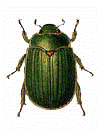Museum, University of Nebraska State
Defining and validating regenerative farm systems using a composite of ranked agricultural practices
Document Type
Article
Date of this Version
3-10-2021
Citation
Fenster TLD, LaCanne CE, Pecenka JR et al. Defining and validating regenerative farm systems using a composite of ranked agricultural practices [version 1; peer review: 2 approved] F1000Research 2021, 10:115 https://doi.org/10.12688/f1000research.28450.1
Abstract
Background: Ongoing efforts attempt to define farms as regenerative to aid marketers, policymakers, farmers, etc. The approach needs to balance precision with function, and must be transparent, simple, scalable, transferable, incorruptible, and replicable. Methods: We developed practice-based scoring systems to distinguish regenerative cropland and rangeland, and validate them based on whether these scores scaled with regenerative goals on actual farm operations. Study systems included cornfields of the Upper Midwest, almond orchards of California, and rangeland systems of the Northern Plains. Response variables included soil carbon and organic matter, soil micronutrients, water infiltration rates, soil microbial communities, plant community structure, invertebrate community structure, pest populations, yields, and profit. Results: Regenerative outcomes were strongly correlated with our approach to farm scoring. Soil organic matter, fine particulate organic matter, total soil carbon, total soil nitrogen, phosphorous, calcium and sulfur all increased alongside regenerative matrix scores in one or both of the cropping systems. Water infiltration rates were significantly faster in more regenerative almond orchards. Soil bacterial biomass and Haney soil health test scores were higher as cropland incorporated more regenerative practices. Plant species diversity and biomass increased significantly with the number of regenerative practices employed on almonds and rangelands. Invertebrate species diversity and richness were positively associated with regenerative practices in corn, almonds, and rangelands, whereas pest populations and almond yields were unaffected by the number of regenerative practices. Corn yields were negatively associated with more regenerative practices, while almond yields were unaffected by the number of regenerative practices. Profit was significantly higher on more regenerative corn and almond operations. Conclusions: Our scoring system scaled positively with desired regenerative outcomes, and provides the basis for predicting ecosystem responses with minimal information about the farming operation. Natural clusters in the number of regenerative practices used can be used to distinguish regenerative and conventional operations.



Comments
CC-BY